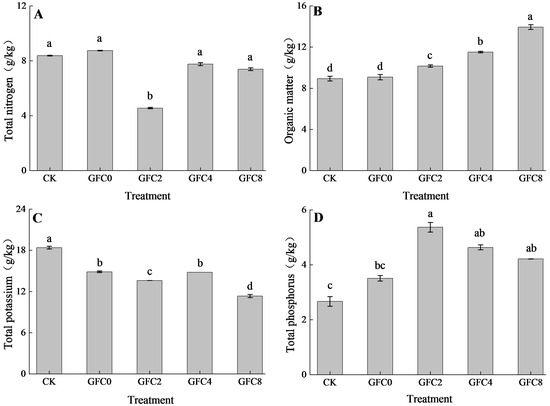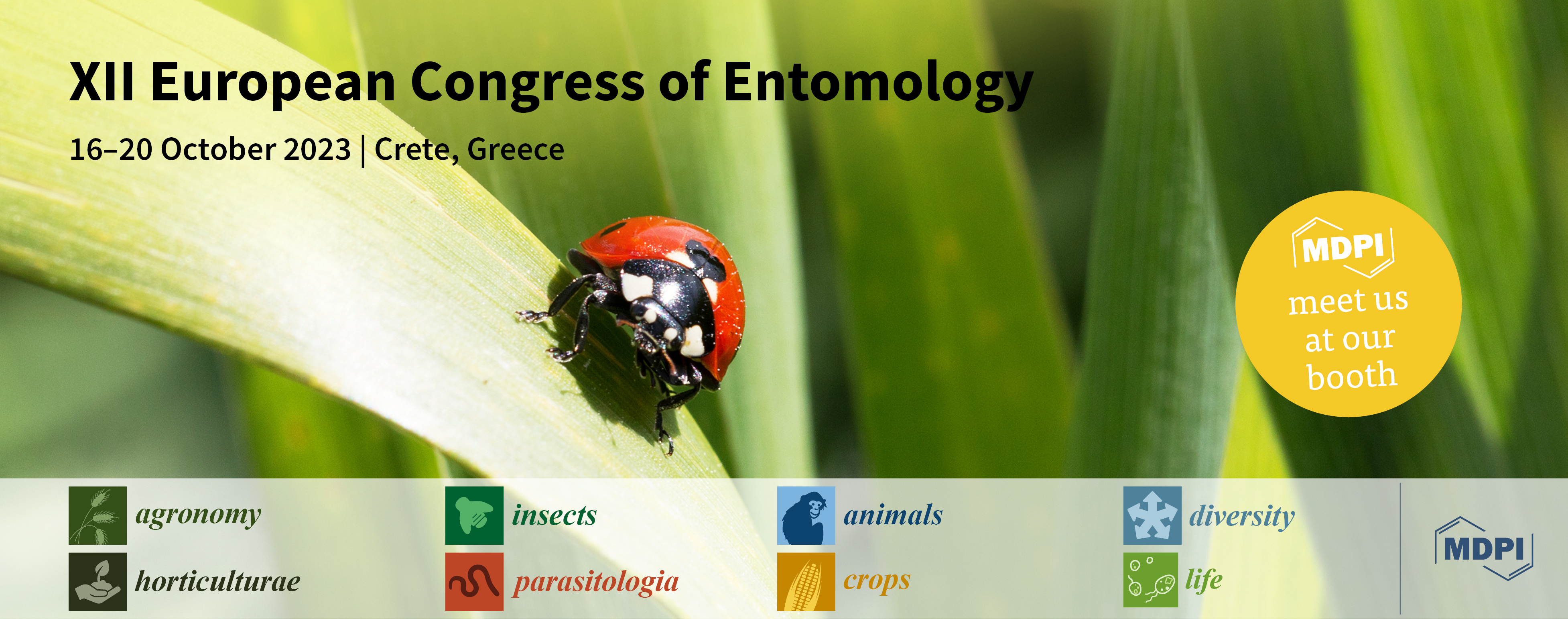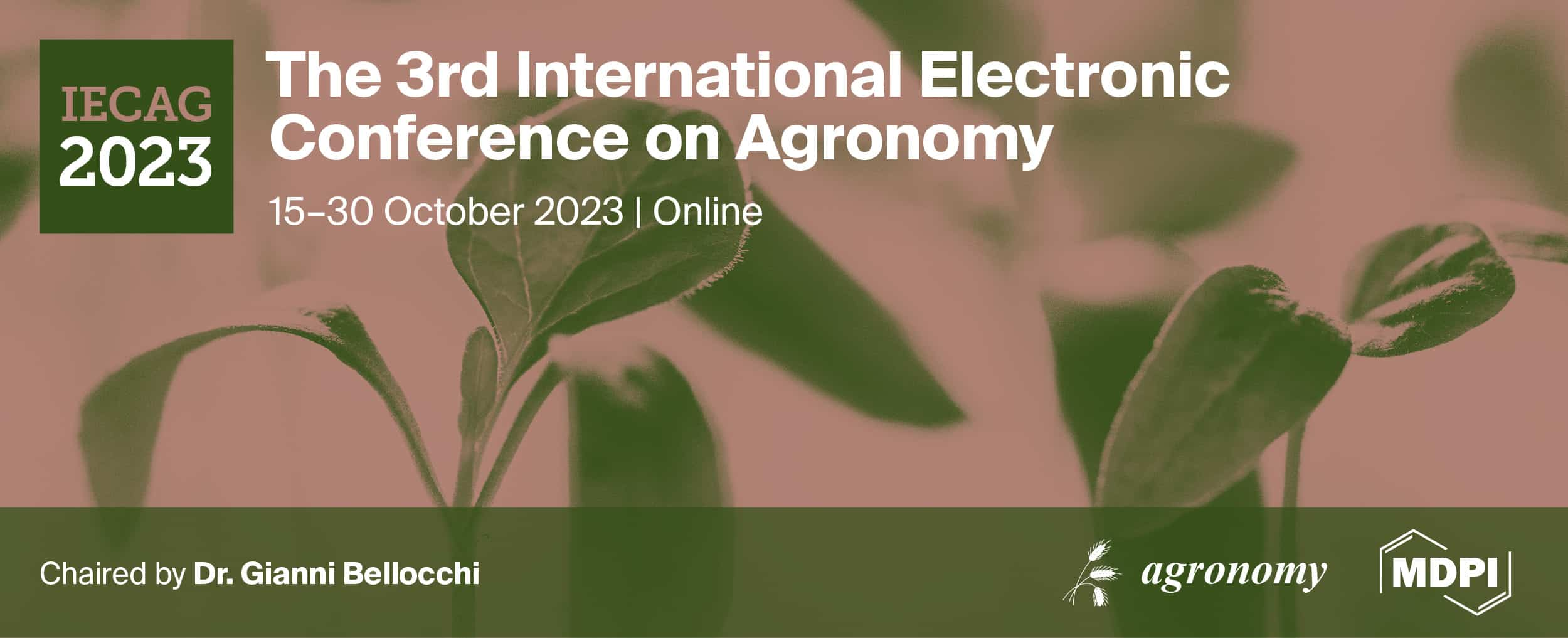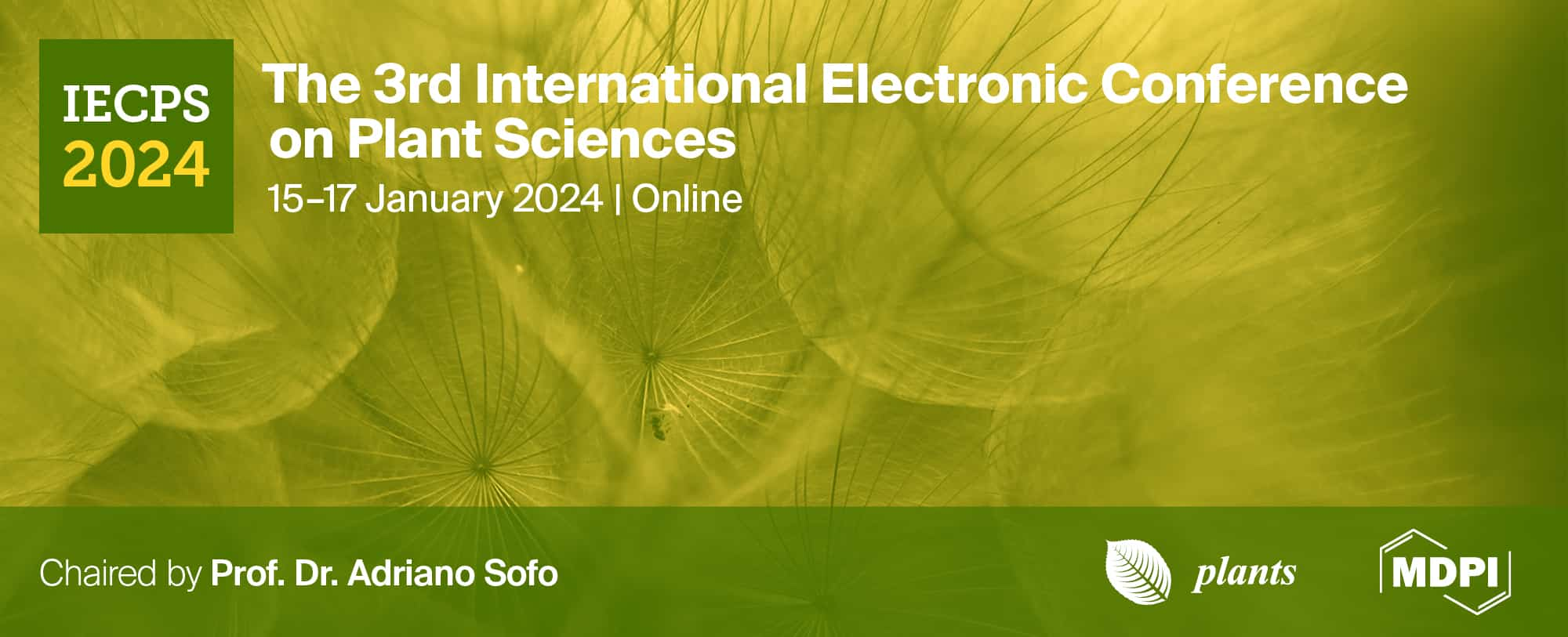-
 Managing Water Stress in Olive (Olea europaea L.) Orchards Using Reference Equations for Midday Stem Water Potential
Managing Water Stress in Olive (Olea europaea L.) Orchards Using Reference Equations for Midday Stem Water Potential -
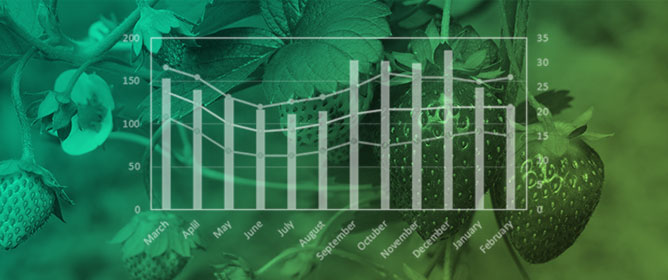 Adaptability and Stability Analyses of Improved Strawberry Genotypes for Tropical Climate
Adaptability and Stability Analyses of Improved Strawberry Genotypes for Tropical Climate -
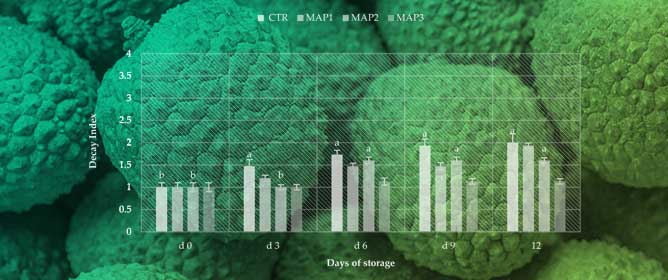 Reduction of Pericarp Browning and Microbial Spoilage on Litchi Fruits in Modified Atmosphere Packaging
Reduction of Pericarp Browning and Microbial Spoilage on Litchi Fruits in Modified Atmosphere Packaging -
 Differences in Saprophytic Growth, Virulence, Genomes, and Secretomes of Ilyonectria robusta and I. mors-panacis Isolates from Roots of American Ginseng (Panax quinquefolius)
Differences in Saprophytic Growth, Virulence, Genomes, and Secretomes of Ilyonectria robusta and I. mors-panacis Isolates from Roots of American Ginseng (Panax quinquefolius) -
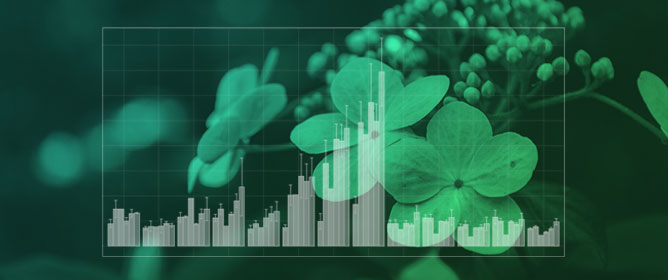 Effect of Seaweed-Based Biostimulants on Growth and Development of Hydrangea paniculata under Continuous or Periodic Drought Stress
Effect of Seaweed-Based Biostimulants on Growth and Development of Hydrangea paniculata under Continuous or Periodic Drought Stress
Journal Description
Horticulturae
Horticulturae
is an international, peer-reviewed, open access journal published monthly online by MDPI. The Spanish Society of Horticultural Sciences (SECH) is affiliated with Horticulturae and its members receive a discount on the article processing charges.
- Open Access— free for readers, with article processing charges (APC) paid by authors or their institutions.
- High Visibility: indexed within Scopus, SCIE (Web of Science), PubAg, AGRIS, FSTA, and other databases.
- Journal Rank: JCR - Q1 (Horticulture) / CiteScore - Q2 (Horticulture)
- Rapid Publication: manuscripts are peer-reviewed and a first decision is provided to authors approximately 14 days after submission; acceptance to publication is undertaken in 2.7 days (median values for papers published in this journal in the first half of 2023).
- Recognition of Reviewers: reviewers who provide timely, thorough peer-review reports receive vouchers entitling them to a discount on the APC of their next publication in any MDPI journal, in appreciation of the work done.
Impact Factor:
3.1 (2022);
5-Year Impact Factor:
3.4 (2022)
Latest Articles
Sodium Silicate Improves Cucumber Seedling Growth and Substrate Nutrients and Reduces Heavy Metal Accumulation in Plants
Horticulturae 2023, 9(9), 988; https://doi.org/10.3390/horticulturae9090988 (registering DOI) - 01 Sep 2023
Abstract
The gasification filter cake (GFC) has great application potential for improving the characteristics of seedling substrates due to its nutrient richness and excellent water retention capacity. However, GFCs leach heavy metals easily and thus pose certain ecological risks. Sodium silicate can enhance plant
[...] Read more.
The gasification filter cake (GFC) has great application potential for improving the characteristics of seedling substrates due to its nutrient richness and excellent water retention capacity. However, GFCs leach heavy metals easily and thus pose certain ecological risks. Sodium silicate can enhance plant resistance to heavy metal toxicity by fixing heavy metals. This study investigated the impact of sodium silicate on cucumber plant growth, the chemical characterization of the substrate, and the distribution and transfer of heavy metals. Sodium silicate was added to the seedling substrate mix at mass rates of 0 g/kg−1 (GFC0), 2 g/kg−1 (GFC2), 4 g/kg−1 (GFC4), and 8 g/kg−1 (GFC8). The seedling substrate was composed of a commercial matrix, caragana compost, and GFC (m:m 7:7:2). The GFC increased the content of total phosphorus (P), available phosphorus (P), and available potassium (K) in the substrate by 31.58%, 16.58%, and 80.10%, respectively. Conversely, the GFC decreased the plant height by 12.3%. Adding sodium silicate to the GFC increased the chlorophyll content of the plants, fixed heavy metals in the substrate, and promoted nutrient absorption and utilization by the plants. Compared with GFC0 without sodium silicate, adding sodium silicate at a mass rate of 2 g/kg−1 (GFC2) reduced the chromium, lead, and cadmium contents by 51.13%, 26.37%, and 90.04%, respectively, which effectively alleviated heavy metal stress and was more conducive to plant growth.
Full article
(This article belongs to the Special Issue Plants Response to Abiotic Stresses: Strategies for Adaptations and Survival)
►
Show Figures
Open AccessArticle
Recycled Waste Leaf Litter Pots Exhibit Excellent Biodegradability: An Experimental Analysis
by
, , , , , and
Horticulturae 2023, 9(9), 987; https://doi.org/10.3390/horticulturae9090987 (registering DOI) - 01 Sep 2023
Abstract
The growth of the gardening kit market could result in the increased wasting of nursery pots, which are usually made of plastic. Replacing these pots with biodegradable pots made from green waste could have benefits for climate mitigation, the circular economy, and the
[...] Read more.
The growth of the gardening kit market could result in the increased wasting of nursery pots, which are usually made of plastic. Replacing these pots with biodegradable pots made from green waste could have benefits for climate mitigation, the circular economy, and the greenness of gardening. To address this, we introduce a prototype recycled waste leaf litter (RWLL) nursery pot. Via an incubation experiment over 90 d, we examined their biodegradability and effects on microbial enzyme activity and inorganic nitrogen concentration, comparing them with commercially available biodegradable pots, namely peat–paper mixture pots (also known as Jiffypots®) and coco-coir pots. The effects of pot thickness were tested. Based on mass loss during incubation and on soil CO2 efflux, the RWLL pots exhibited excellent biodegradability, regardless of their thickness, with decomposition rates and soil CO2 efflux 1.5–6 times greater than other biodegradable pots. Biodegradability, extracellular enzyme activity, and soil inorganic nitrogen content were not affected by RWLL pot thickness or by the presence or absence of a plant in the soil. Unlike in natural ecosystems, leaf litter is treated as waste in urban green spaces, and its decomposition into soil organic matter is prevented. Creating plant pots from leaf litter enhances soil quality, reduces atmospheric carbon emissions, and satisfies the desire of gardeners for greenness.
Full article
(This article belongs to the Special Issue Sustainable Horticultural Waste Management)
►▼
Show Figures
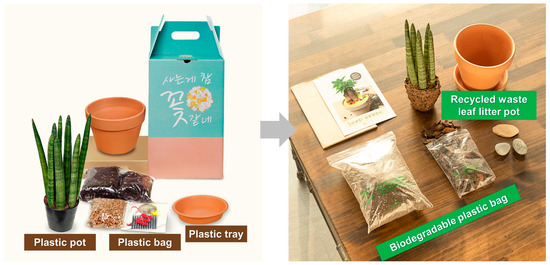
Figure 1
Open AccessArticle
Effect of Cold Plasma Treatment on the Softening of Winter Jujubes (Ziziphus jujuba Mill. cv. Dongzao)
by
, , , , , , , and
Horticulturae 2023, 9(9), 986; https://doi.org/10.3390/horticulturae9090986 (registering DOI) - 01 Sep 2023
Abstract
Cold plasma (CP) is a green and efficient preservation technology, but its effect on preventing the postharvest softening of fruits and vegetables is still unclear, and the effects of different CP intensities on the postharvest softening of winter jujubes (Ziziphus jujuba Mill.
[...] Read more.
Cold plasma (CP) is a green and efficient preservation technology, but its effect on preventing the postharvest softening of fruits and vegetables is still unclear, and the effects of different CP intensities on the postharvest softening of winter jujubes (Ziziphus jujuba Mill. cv. Dongzao) have been little studied. In this study, we investigated the effects of different CP intensities (0 kV, 40 kV, and 80 kV) on the postharvest storage quality of winter jujubes and the activities of key enzymes related to softening during storage. The results showed that compared with the control group, the contents of firmness, total soluble solids (TSS), titratable acidity (TA), and vitamin C (VC) in the CP treatment group were higher and the respiratory intensity and weight loss rate were lower. In addition, CP treatment can also inhibit the degradation of protopectin and cellulose and the accumulation of soluble pectin. Moreover, CP treatment inhibited the activities of polygalacturonase (PG), pectin methyl esterase (PME), 3α-L-arabinoside (α-L-Af), 4β-galactosidase (β-gal), cellulase (Cx), and β-glucosidase (β-Glu). This shows that CP treatment has a positive effect on the preservation of winter jujubes, and the preservation effect of the 80 kV treatment was better than that of the 40 kV treatment. This provides a certain basis for cold plasma treatment in the preservation of winter jujubes.
Full article
(This article belongs to the Special Issue Postharvest Physiology and Disease of Fruits, Volume II)
►▼
Show Figures

Figure 1
Open AccessArticle
Alternative Integrated Weed Management Options for Clopyralid-Resistant Common Ragweed
Horticulturae 2023, 9(9), 985; https://doi.org/10.3390/horticulturae9090985 (registering DOI) - 31 Aug 2023
Abstract
Common ragweed (Ambrosia artemisiifolia L.) is an extremely competitive broadleaved summer annual weed found in Christmas tree production systems within Michigan. Common ragweed has been reported to have resistance to glyphosate, PSII inhibitors, PPO inhibitors, and ALS herbicides. There have been reports
[...] Read more.
Common ragweed (Ambrosia artemisiifolia L.) is an extremely competitive broadleaved summer annual weed found in Christmas tree production systems within Michigan. Common ragweed has been reported to have resistance to glyphosate, PSII inhibitors, PPO inhibitors, and ALS herbicides. There have been reports from Michigan Christmas tree growers of common ragweed resistance to clopyralid, a synthetic auxin herbicide, in Montcalm County, Michigan. The objective of this study was to test alternative post-emergence herbicide combinations and organic mulch on clopyralid-resistant common ragweed for weed control efficacy. The following two stages of common ragweed were used: stage 1 (6–9 leaves) and stage 2 (12–14 leaves). For common ragweed in stage 1 in 2021 and 2022, as well as stage 2 in 2022, at all evaluation dates, mulch + clopyralid + oxyfluorfen provided the highest level of weed control. For stage 1 in 2022, this treatment combination provided 100% control from 2 weeks after treatment (WAT) and always showed better or equal weed control compared to all the other treatments. The combination of mulch + clopyralid + glyphosate provided 100% control by 2 WAT when plants were treated at stage 2 in 2022. For the plants treated at stage 1 in 2022, many of the treatments reached a fresh weight of 0 g, but in 2021, those same treatments resulted in a fresh weight of around 20 g. Based on fresh weight, the greatest plant growth occurred with glyphosate treatment in 2021 and clopyralid and mulch alone in 2022. This is likely due to common ragweed’s resistance to these herbicides.
Full article
(This article belongs to the Section Floriculture, Nursery and Landscape, and Turf)
►▼
Show Figures
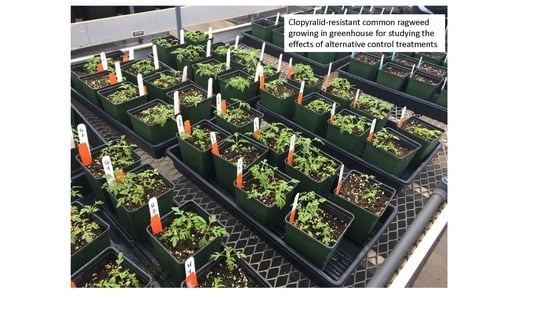
Graphical abstract
Open AccessPerspective
Effect of Compost Tea in Horticulture
by
, , , , , , and
Horticulturae 2023, 9(9), 984; https://doi.org/10.3390/horticulturae9090984 - 31 Aug 2023
Abstract
Nowadays, modern agriculture looks for valid, sustainable, and green alternatives that are able to improve and maintain soil quality and fertility over time. Recycling organic waste as fertilizer is one of the strategies for sustainable production. Recently, the use of new products derived
[...] Read more.
Nowadays, modern agriculture looks for valid, sustainable, and green alternatives that are able to improve and maintain soil quality and fertility over time. Recycling organic waste as fertilizer is one of the strategies for sustainable production. Recently, the use of new products derived from compost, such as compost tea (CT), is increasing due to their positive effects on crops. This perspective wants to give an updated shot at the effect of compost tea in horticulture. In addition to the classification of compost tea, with a focus on production procedures and composition, the possible effects they have both on the control of phytopathogens in horticulture and the influence they can have on the content of bioactive molecules and nutrients were highlighted. It is interesting to note that compost teas can have an effect on the final content of micro and macronutrients, thus improving the nutritional qualities and also increasing the content of bioactive compounds that may play a role in maintaining and improving human health. The combined use of compost tea with other treatments is being explored as a promising and innovative direction.
Full article
(This article belongs to the Section Plant Nutrition)
►▼
Show Figures

Figure 1
Open AccessArticle
Inhibitory Activity and Mechanism of Action with Thymol against the Blueberry Pathogenic Fungi Caused by Neopestalotiopsis clavispora
Horticulturae 2023, 9(9), 983; https://doi.org/10.3390/horticulturae9090983 - 31 Aug 2023
Abstract
Decay caused by Neopestalotiopsis clavispora is an important postharvest disease of blueberries that seriously affects the commercial value of blueberry fruit. In this paper, we studied the inhibitory activity and mode of action of thymol against the pathogenic fungus of blueberries caused by
[...] Read more.
Decay caused by Neopestalotiopsis clavispora is an important postharvest disease of blueberries that seriously affects the commercial value of blueberry fruit. In this paper, we studied the inhibitory activity and mode of action of thymol against the pathogenic fungus of blueberries caused by Neopestalotiopsis clavispora. The results demonstrated that thymol administration could limit mycelial growth in vitro; the inhibitory effect was positively connected with thymol mass concentrations, and the minimal inhibitory concentration (MIC) was 100 mg/L. Further investigations revealed that MIC thymol treatment dramatically reduced the germination of pathogenic spores and led to an increase in the conductivity of the pathogen, leakage of contents, and a decrease in pH. Propidium iodide (PI) staining experiments demonstrated that MIC thymol caused damage to mycelial cell membranes. Additionally, MIC thymol treatment promoted mycelium malondialdehyde content accumulation, inhibited superoxide dismutase (SOD) and catalase (CAT) enzyme activities, decreased adenosine triphosphate (ATP), adenosine diphosphate (ADP), and adenosine monophosphate (AMP) content and energy charge levels, and the fluorescence intensity of mycelium caused by MIC thymol treatment was significantly increased by the 2,7-Dichlorodi-hydrofluorescein diacetate (DCFH-DA) assay. The results of this study indicate that thymol suppresses the proliferation of Neopestalotiopsis clavispora by compromising the integrity of their cell membranes, promoting the accumulation of cellular reactive oxygen species (ROS), and interfering with energy metabolism.
Full article
(This article belongs to the Special Issue Innovative Technological Advances in Postharvest Quality and Microbial Spoilage Control of Horticultural Products)
►▼
Show Figures
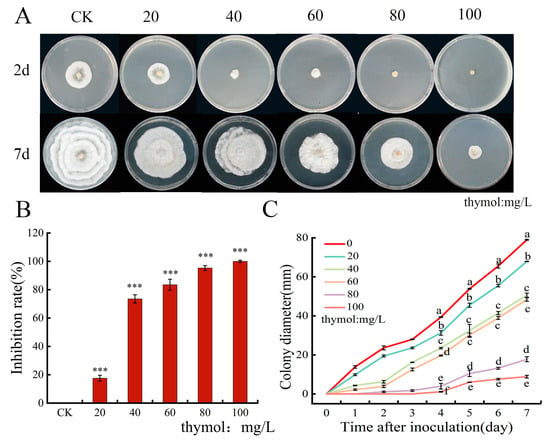
Figure 1
Open AccessArticle
Genome-Wide Identification of Fatty Acyl-CoA Reductase (FAR) Genes in Dendrobium catenatum and Their Response to Drought Stress
Horticulturae 2023, 9(9), 982; https://doi.org/10.3390/horticulturae9090982 - 31 Aug 2023
Abstract
Dendrobium catenatum is a high-value medicinal plant that is predominantly found in high mountain areas, thriving amidst cliffs and rock crevices. However, its wild resources face constant threats from adverse environmental conditions, especially drought stress. Fatty acyl-CoA reductase (FAR) is crucial in plant
[...] Read more.
Dendrobium catenatum is a high-value medicinal plant that is predominantly found in high mountain areas, thriving amidst cliffs and rock crevices. However, its wild resources face constant threats from adverse environmental conditions, especially drought stress. Fatty acyl-CoA reductase (FAR) is crucial in plant drought resistance, but there is a lack of research on FAR genes in D. catenatum. In this study, the FAR family genes were identified from the D. catenatum genome. Their genomic characteristics were investigated using bioinformatics techniques, and their expression patterns in different tissues and under 20% PEG8000 conditions mimicking drought stress were analyzed using quantitative real-time RT-PCR (RT-qPCR). Seven DcFAR genes were identified from the D. catenatum genome. The encoded amino acids range between 377 and 587 aa, with molecular weights between 43.41 and 66.15 kD and isoelectric points between 5.55 and 9.02. Based on the phylogenetic relationships, the FAR family genes were categorized into three subgroups, each with similar conserved sequences and gene structures. The cis-acting elements of the promoter regions were assessed, and the results reveal that the DcFAR upstream promoter region contains multiple stress-related elements, suggesting its potential involvement in abiotic stress responses. The RT-qPCR results show distinct expression patterns of DcFAR genes in various plant tissues. It was observed that the expression of most DcFAR genes was upregulated under drought stress. Among them, the expression levels of DcFAR2, DcFAR3, DcFAR5, and DcFAR7 genes under drought stress were 544-, 193-, 183-, and 214-fold higher compared to the control, respectively. These results indicate that DcFAR2/3/5/7 might play significant roles in D. catenatum drought tolerance. This research offers insight into the function of DcFAR genes and provides theoretical support for breeding drought-resistant D. catenatum varieties.
Full article
(This article belongs to the Special Issue Abiotic Stress Responses in Ornamental Crops: The State of the Art 2023)
►▼
Show Figures
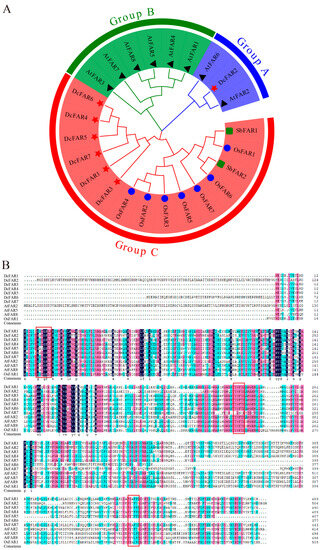
Figure 1
Open AccessBrief Report
In Vitro Hypoxic Environment Enhances Volatile Compound Production in Persian Violet Flowers
Horticulturae 2023, 9(9), 981; https://doi.org/10.3390/horticulturae9090981 - 31 Aug 2023
Abstract
Flowers of Persian violet (Exacum affine Balf. f. ex Regel) that are grown in nature typically produce a scent. However, whether Persian violet flowers developed inside sterile containers produce odors has yet to be studied. Therefore, this research aimed to study and
[...] Read more.
Flowers of Persian violet (Exacum affine Balf. f. ex Regel) that are grown in nature typically produce a scent. However, whether Persian violet flowers developed inside sterile containers produce odors has yet to be studied. Therefore, this research aimed to study and compare the effects of ex vitro and in vitro environments on the volatile composition of Persian violet flowers. Persian violet flowers obtained from an in vitro culture and potted plants were analyzed for volatile constituents using gas chromatography–mass spectrometry (GC-MS). The main constituent of the volatile compounds in the Persian violet flowers grown in both conditions was alcohol, with 3-hexen-1-ol, which produces a grassy-green odor, being the dominant substance. In addition, the in vitro Persian violet flowers contained the highest amount of ethanol, which produces a wine aroma—followed by the terpene alcohol β-citronellol, which produces a rose scent. However, 3-carene (citrus odor), caryophyllene (floral odor), humulene (woody odor), and β-ionone (floral odor) were detected onlyin Persian violet flowers grown in natural conditions. Therefore, these results indicate that hypoxia possibly occurred during plantlet growth in the in vitro environment and caused some different volatile compound production from that in natural conditions.
Full article
(This article belongs to the Special Issue In Vitro Propagation and Biotechnology of Horticultural Plants)
►▼
Show Figures
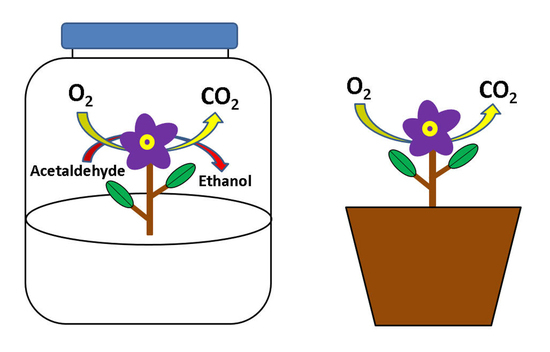
Graphical abstract
Open AccessArticle
Transcriptomic and Metabolomic Analyses of Seedlings of Two Grape Cultivars with Distinct Tolerance Responses to Flooding and Post-Flooding Stress Conditions
Horticulturae 2023, 9(9), 980; https://doi.org/10.3390/horticulturae9090980 - 30 Aug 2023
Abstract
Grapes, an important and widespread fruit crop providing multiple products, face increasing flooding risks due to intense and frequent extreme rainfall. It is thus imperative to fully understand the flood-tolerance mechanisms of grapevines. Here, RNA-seq and LC-MS/MS technologies were used to analyze the
[...] Read more.
Grapes, an important and widespread fruit crop providing multiple products, face increasing flooding risks due to intense and frequent extreme rainfall. It is thus imperative to fully understand the flood-tolerance mechanisms of grapevines. Here, RNA-seq and LC-MS/MS technologies were used to analyze the transcriptome and metabolome changes in the roots of SO4 (tolerant to flooding) and Kyoho (sensitive to flooding) grapes under flooding and post-flooding conditions. The results showed that the abundance of many metabolites in the phenylpropanoids and polyketides, organic acids and their derivatives, and organic oxygen compounds superclasses changed in different patterns between the Kyoho and SO4 grapes under flooding and post-flooding conditions. Jasmonic acid and the ascorbic acid–glutathione cycle played a pivotal role in coping with both hypoxia stress and reoxygenation stress incurred during flooding and post-flooding treatments in the SO4 cultivar. Under flooding stress, the regulatory mechanistic shift from aerobic respiration to anaerobic fermentation under hypoxia is partly missing in the Kyoho cultivar. In the post-flooding stage, many genes related to ethylene, gibberellins, cytokinins, and brassinosteroids biosynthesis and brassinosteroids-responsive genes were significantly downregulated in the Kyoho cultivar, adversely affecting growth recovery; however, their expression was not reduced in the SO4 cultivar. These findings enhance our understanding of the flooding-tolerance mechanisms in grapes.
Full article
(This article belongs to the Special Issue Abiotic Stress Responses in Ornamental Crops: The State of the Art 2023)
►▼
Show Figures
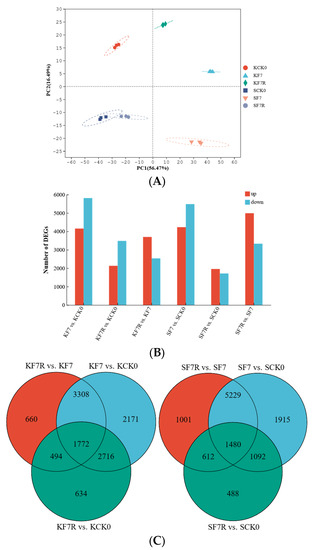
Figure 1
Open AccessArticle
Asparagus (Asparagus officinalis L.) Root Distribution: Cultivar Differences in Mature Plantings
by
Horticulturae 2023, 9(9), 979; https://doi.org/10.3390/horticulturae9090979 - 30 Aug 2023
Abstract
Annual plant growth patterns and seasonal conditions have both been shown to influence asparagus (Asparagus officinalis L.) root development over time. Root biomass and distribution changes in mature asparagus cultivars are herein illustrated and described. Asparagus root length density and biomass were
[...] Read more.
Annual plant growth patterns and seasonal conditions have both been shown to influence asparagus (Asparagus officinalis L.) root development over time. Root biomass and distribution changes in mature asparagus cultivars are herein illustrated and described. Asparagus root length density and biomass were estimated from soil cores using a systematic field sampling approach each spring. Soil cores (0.9 m deep) were divided into 0.15 m lengths and fleshy roots collected from the soil. Root length density and dry weights were determined and root distribution maps generated from collected data. As asparagus plantings matured, the sampling year had a significant influence on root development. Fleshy roots grew deeper into the soil each year but the majority of roots of Atlas, Guelph Millennium, and Jersey Giant were found in the upper 60 cm of the soil profile. For the three cultivars evaluated, minor differences in root length and root weight occurred. By Year 6, Atlas showed a decrease in root length and weight when compared to Guelph Millennium and Jersey Giant. While spear yield differences between the varieties were not significant, Atlas tended to produce more very large and large spears compared to Guelph Millennium and Jersey Giant. These results increase our understanding of asparagus root development.
Full article
(This article belongs to the Section Vegetable Production Systems)
►▼
Show Figures
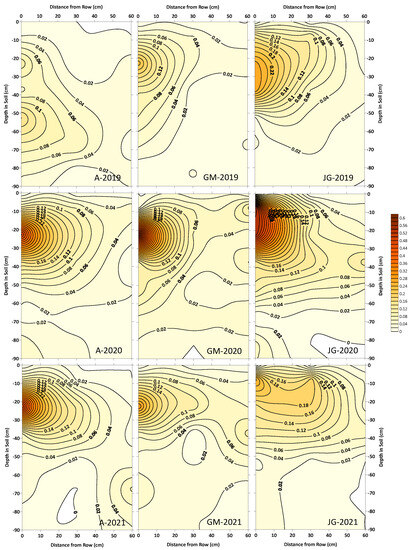
Figure 1
Open AccessArticle
Sensitivity Consequences of Ethylene in Determining the Vase Life of Eremurus spectabilis and E. persicus
Horticulturae 2023, 9(9), 978; https://doi.org/10.3390/horticulturae9090978 - 30 Aug 2023
Abstract
Foxtail lily (Eremurus), as a medicinal-ornamental geophyte, has recently emerged in the cut flower market as a novel, commercially significant specialty cut flower (SCF). However, there is limited information about the sensitivity to ethylene of foxtail lily species for managing the
[...] Read more.
Foxtail lily (Eremurus), as a medicinal-ornamental geophyte, has recently emerged in the cut flower market as a novel, commercially significant specialty cut flower (SCF). However, there is limited information about the sensitivity to ethylene of foxtail lily species for managing the ethylene-mediated senescence to prolong the vase life and maintain the ornamental quality of this flower. The purpose of the current study was to compare the ethylene production rates and patterns, as well as the responses to exogenous ethylene and ethylene inhibitors, between two species, E. spectabilis and E. persicus, to better understand the role of ethylene in Eremurus inflorescence senescence. The results revealed that exogenous ethylene (10 μL L−1), as a pulsing or continuous method, dramatically accelerated petal wilting in E. spectabilis and petal abscission in E. persicus. Furthermore, the rate and patterns of endogenous ethylene production varied significantly among the two investigated species. Interestingly, E. persicus exhibited a higher rate of ethylene production than E. spectabilis on the first day after harvesting, but the reverse was true at the end of the vase life (Day 4 of the vase period). The results revealed that the treatments with ethylene inhibitors considerably improved the water relations and vase longevity of both foxtail lily species. The vase life of E. spectabilis was dramatically enhanced by silver thiosulfate complex (STS) treatment (0.2 mM pulse for 24 h) from 5 d (control) to 7 d. Furthermore, 1-methylcyclopropene (1-MCP) at 0.5 and 1.0 μL L−1 markedly improved water uptake, relative fresh weight, and water balance and extended the vase life of cut inflorescences by ~2 d in E. spectabilis and E. persicus, compared with those of control cut inflorescences, respectively. This research revealed that ethylene is involved in controlling the senescence of foxtail lily flowers, and two tested species exhibited distinct forms of ethylene sensitivity, including abscission type in E. persicus and wilting-type in E. spectabilis. Collectively, these findings suggest that ethylene is involved in the senescence of cut foxtail lily inflorescence and that ethylene inhibitors can prolong vase life.
Full article
(This article belongs to the Section Floriculture, Nursery and Landscape, and Turf)
►▼
Show Figures
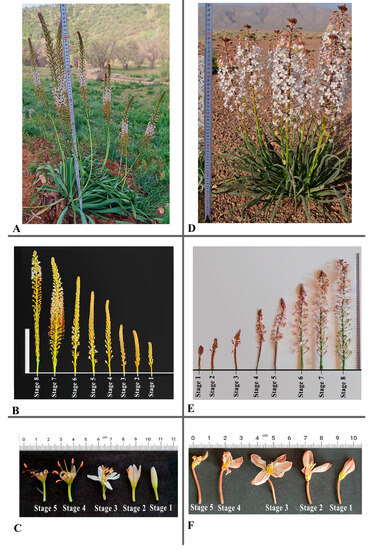
Figure 1
Open AccessArticle
Hub Gene Identification and Heat-Stress-Related Transcriptional Regulation Mechanism in Cabbage (Brassica oleracea L.)
Horticulturae 2023, 9(9), 977; https://doi.org/10.3390/horticulturae9090977 - 30 Aug 2023
Abstract
Cabbage is a heat-stress-sensitive cool-season crop. When exposed to high temperatures, cabbage plants can experience reduced growth, wilting, leaf yellowing, and premature bolting (the formation of a flowering stem). The regulatory mechanism controlling heat stress is poorly understood in cabbage. To investigate this
[...] Read more.
Cabbage is a heat-stress-sensitive cool-season crop. When exposed to high temperatures, cabbage plants can experience reduced growth, wilting, leaf yellowing, and premature bolting (the formation of a flowering stem). The regulatory mechanism controlling heat stress is poorly understood in cabbage. To investigate this mechanism, physiological changes and transcriptional profiling for different heat treatment times were analyzed in this study. The results showed that superoxide dismutase (SOD), catalase (CAT), and peroxidase (POD) activities were enhanced under heat stress. In particular, the increase in SOD and POD activities after 12 h of heat treatment was greater than that after 4 h of heat treatment. With increasing heat treatment duration, the leaf CAT activity and H2O2 content decreased after the initial increase. The electrolyte leakage and malondialdehyde (MDA) content dropped significantly, while the proline content increased. Alongside that, 7007 and 5537 upregulated genes were identified in the experimental group treated with heat stress for the 4 h and 12 h treatments, respectively. We found that 10,479 DEGs were shared in the heat stress treatment, of which 1241 were associated with the heat treatment time. By integrating the expression patterns and functional annotations of genes related to heat stress, we identified 15 hub genes that respond to heat stress in cabbage. Meanwhile, we had constructed a physiological to molecular model of cabbage response to long-term heat stress. These findings provide new insights for the comprehensive analysis of cabbage response to heat stress and genetic resources for breeding new varieties of cabbage with heat tolerance via genetic engineering.
Full article
(This article belongs to the Special Issue Recent Scientific Developments in Breeding and Genetics of Ornamental and Beverage Plants)
►▼
Show Figures

Figure 1
Open AccessFeature PaperArticle
Copper and Zinc Accumulation in Young Leaves of Eruca sativa (L.) Grown in Soilless Culture
Horticulturae 2023, 9(9), 976; https://doi.org/10.3390/horticulturae9090976 - 29 Aug 2023
Abstract
Heavy metals are environmental pollutants that cause toxicity in plants and represent a risk for human health, linked to bioaccumulation through the food chain. However, excess accumulation may not occur in young plants in the early stages of exposure to the toxic element.
[...] Read more.
Heavy metals are environmental pollutants that cause toxicity in plants and represent a risk for human health, linked to bioaccumulation through the food chain. However, excess accumulation may not occur in young plants in the early stages of exposure to the toxic element. In the present work, rocket (Eruca sativa L.) plants grown in hydroponics were exposed for three weeks to excess concentrations (25, 50, or 100 µM) of Cu or Zn in the nutrient solution and were more sensitive to Cu than Zn toxicity. However, a significant decrease in the leaf biomass production as compared with the control was observed only after two or three weeks, and only minor signals of metal-induced adverse effects were evidenced concerning photosynthesis, oxidative stress indicators, antioxidant metabolites, and macronutrients. After two or three weeks, the leaf level of Cu occasionally approached the upper value associated with the recommended limits of dietary intake for human adults. However, as rocket leaves are commercialized when they achieve a 10–15 cm length, after one week of cultivation in perlite, the plants had an adequate size without metal contamination and could be considered suitable for the food market, even after exposure to Cu or Zn concentrations up to 100 µM.
Full article
(This article belongs to the Special Issue Stress Cultivation and Physiology of Vegetables: Challenges and Prospects)
►▼
Show Figures
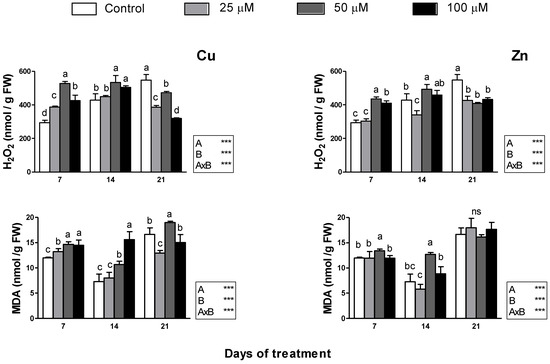
Figure 1
Open AccessArticle
Effects of D-Limonene Nanoemulsion Coating on Post-Harvest Quality and Physiology of Papaya
Horticulturae 2023, 9(9), 975; https://doi.org/10.3390/horticulturae9090975 - 29 Aug 2023
Abstract
Papaya (Carica papaya L.) is a climacteric fruit, and its quality will rapidly decrease after ripening. Hence, the storage life of its fruit is short. D-limonene is a terpene compound in citrus essential oil and has antibacterial and antioxidant properties. The addition
[...] Read more.
Papaya (Carica papaya L.) is a climacteric fruit, and its quality will rapidly decrease after ripening. Hence, the storage life of its fruit is short. D-limonene is a terpene compound in citrus essential oil and has antibacterial and antioxidant properties. The addition of D-limonene in edible coating can delay volatilization, prevent microorganism and pathogen invasion, decrease water loss, inhibit softening, decrease gas exchange, and extend the storage life of fruits. In this study, 0.25%, 0.5%, and 1% D-limonene nanoemulsion coatings were used for post-harvest immersion treatment of “Tainung No. 2” papayas and its effects on appearance, chlorophyll content, respiration rate, ethylene production, pectin methylesterase, polygalacturonase activity, decay loss, firmness, total soluble solid, titratable acidity, ascorbic acid, and total plate count were investigated. After the papayas were treated with 0.5% D-limonene nanoemulsion coating, polygalacturonase and pectin methylesterase activities decreased, fruit firmness was maintained, and ascorbic acid content was high. On the last day of storage, polygalacturonase and pectin methylesterase activities were 0.01 and 0.02 U/kg FW lower than the control group, respectively; firmness was higher than the control group by 1.75 N, and ascorbic acid content was higher than the control group by 31.97 mg/100 g FW. On Day 2, the treatment showed delay in total soluble solid accumulation and chlorophyll degradation, consequently delaying the color change in fruits. The coating decreased decay loss by 40% on Day 2, decreased respiration rate by 97.0 mg CO2 kg−1 h−1, and ethylene production by 5.7 µL kg−1 h−1 on Day 2. Simultaneously, the coating decreased the total plate count and resulted in a good appearance. Fruits coated with a 1% D-limonene nanoemulsion coating showed defects in color change. In summary, 0.5% D-limonene nanoemulsion coating delayed “Tainung No. 2” papaya ripening and decreased microbial infection, consequently extending its storage life.
Full article
(This article belongs to the Special Issue Storage and Quality Management of Horticultural Products)
►▼
Show Figures
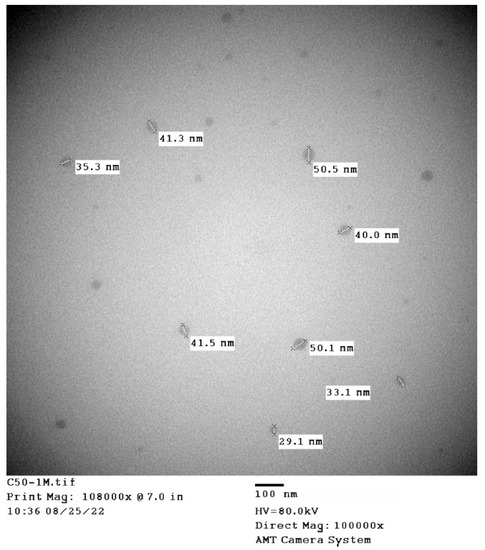
Figure 1
Open AccessArticle
Sweet Potato Varietal Selection Using Combined Methods of Multi-Trait Index, Genetic Gain and Stability from Multi-Environmental Evaluations
by
, , , , , and
Horticulturae 2023, 9(9), 974; https://doi.org/10.3390/horticulturae9090974 - 29 Aug 2023
Abstract
Adaptation to several environmental conditions is a challenge for breeders for producing new varieties. Breeders select genotypes which show higher performance according to desired traits compared to the average of a large segregant population. In several crops, the selection index is mainly based
[...] Read more.
Adaptation to several environmental conditions is a challenge for breeders for producing new varieties. Breeders select genotypes which show higher performance according to desired traits compared to the average of a large segregant population. In several crops, the selection index is mainly based on traits such as yield, quality, adequate plant architecture, etc. Therefore, multi-trait selection allows for the identification of genotypes that integrally exhibit a better profile and stability, in addition to the dissection of promising varieties based on their superiority in an evaluated population. In this paper, a multi-trait index included in an R tool named CropInd was used to estimate the agronomic performance of 19 sweet potato genotypes in multi-environmental evaluations (three cycles and eight locations). Here, the multi-trait index incorporated variables such as total and commercial fresh root yield, along with survival percentage, which were used in this study. Simultaneously, stability and genetic gain analysis were included to select superior sweet potato genotypes. Results showed that the CropInd script is a suitable and convenient tool for genotype selection based on multi-trait and multi-environmental data. Indexes for specific environment and general behavior (combining multi-environments) were the main output used for genotype selection. Multi-trait selection index, stability, and genetic gain analysis assisted the phenotypic selection performed by breeders. This study resulted in the selection of 0113-672COR as new variety for the Colombian Caribbean region due to its multi-trait performance and stability.
Full article
(This article belongs to the Special Issue Germplasm Resource Identification and Genetic Improvement of Horticultural Crop)
►▼
Show Figures
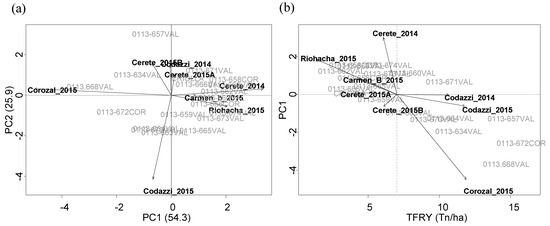
Figure 1
Open AccessArticle
Impact of Arbuscular mycorrhizal Fungal Strains Isolated from Soil on the Growth, Yield, and Fruit Quality of Tomato Plants under Different Fertilization Regimens
by
, , , , , , , and
Horticulturae 2023, 9(9), 973; https://doi.org/10.3390/horticulturae9090973 - 29 Aug 2023
Abstract
Arbuscular mycorrhizal fungi (AMF) have emerged as a promising and environmentally friendly solution for sustainable agriculture, offering a reduction in dependence on chemical inputs. The objective of this greenhouse experiment was to assess the efficacy of a natural endomycorrhizal inoculum obtained from leek
[...] Read more.
Arbuscular mycorrhizal fungi (AMF) have emerged as a promising and environmentally friendly solution for sustainable agriculture, offering a reduction in dependence on chemical inputs. The objective of this greenhouse experiment was to assess the efficacy of a natural endomycorrhizal inoculum obtained from leek root fragments, which acted as a trap plant to capture indigenous fungal spores present in the soil of the Guercif region in Morocco. The investigation aimed to comprehensively evaluate the influence of this inoculum on various parameters related to tomato plant growth, yield, and sensory quality. Additionally, different levels of chemical fertilizers, equivalent to 50%, 75%, and 100% of the recommended dosage, were administered in combination with or without the inoculum. The findings elucidated significant advantages associated with mycorrhizal inoculation. The plants subjected to inoculation exhibited increased plant height, augmented leaf and root dry weights, and improved nutrient uptake compared to the control group. Notably, tomato plants treated with 75% of the recommended chemical fertilizer dosage yielded the highest crop production, with no statistically significant difference observed when compared to those receiving the full dosage (100%). Intriguingly, tomato plants grown in substrates receiving 50% chemical fertilizers demonstrated the highest levels of mycorrhization, exhibiting a frequency (F) of 100% and an intensity (M) of 63%. Importantly, the combination of inoculation with a reduced dose of NPK fertilizer (50% of the recommended amount) resulted in significantly elevated concentrations of calcium (Ca), potassium (K), iron (Fe), zinc (Zn), and phosphorus (P) in the plants, attributable to the heightened mycorrhizal colonization of the roots. In terms of fruit characteristics, no significant variations were detected in pH and electrical conductivity (EC) among the treatment groups. However, the inoculated plants exhibited a notable increase in the Brix index, an indicator of sweetness, compared to the control group across all fertilizer doses. Furthermore, inoculation positively influenced the levels of total carotenoids in the fruits. Remarkably, the values of these compounds in the inoculated plants subjected to 50% of the recommended fertilizer dosage surpassed those recorded in the non-inoculated plants receiving the full dosage.
Full article
(This article belongs to the Special Issue Mycorrhizal Roles in Horticultural Plants)
►▼
Show Figures
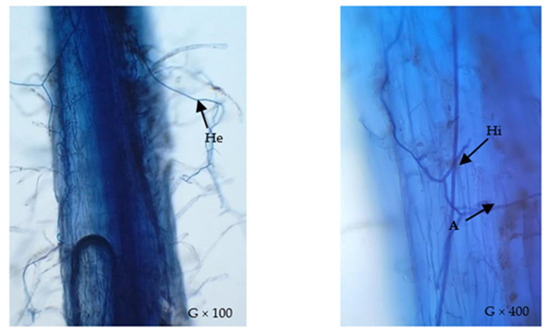
Figure 1
Open AccessArticle
Plastome Data of Red Currant and Gooseberry Reveal Potential Taxonomical Issues within the Ribes Genus (Grossulariaceae)
by
, , , , , , , , , and
Horticulturae 2023, 9(9), 972; https://doi.org/10.3390/horticulturae9090972 - 29 Aug 2023
Abstract
The complete chloroplast genomes of red currant cultivar ‘Belaya Potapenko’ and gooseberry cultivar ‘Nekrasovskij’ were sequenced and assembled for the first time. The plastomes are 157,802 bp and 157,559 bp in length for Ribes rubrum and R. uva-crispa, respectively. The R. rubrum cp
[...] Read more.
The complete chloroplast genomes of red currant cultivar ‘Belaya Potapenko’ and gooseberry cultivar ‘Nekrasovskij’ were sequenced and assembled for the first time. The plastomes are 157,802 bp and 157,559 bp in length for Ribes rubrum and R. uva-crispa, respectively. The R. rubrum cp genome is 243 b.p. longer. It has one more protein-coding gene ycf1, which is pseudogenized in the R. uva-crispa cp genome. In total, 56 and 54 simple sequence repeats (SSRs) were identified within the assembled plastid genomes. The SSR content of plastid genomes was assessed for the 18 Saxifragales species. Phylogeny inference based on plastome data of 18 Saxifragales revealed that all Ribes species are clustered together on the phylogenetic tree, though R. fasciculatum seems to be the most distant from the other analyzed Ribes species. The position of taxa inside the Ribes genus clade does not support the concept of its division into five subgenera. All Ribes species share approximately the same set of protein-coding genes in their plastome sequences. There was multiple independent pseudogenization of the ycf1 gene within the Ribes genus as well as other Saxifragales taxa. Negative selection was observed for most of the genes in both the Ribes group and Saxifragales. A positive selection ratio was observed only inside the Ribes group for the ycf4 and clpP genes. Together with positive selection signatures, pseudogenization events of ycfs genes perhaps reflect that these genes’ evolution was important for Ribes’ adaptation. Thus, our study provides genomic resources and valuable reference for marker development, and makes some clarifications of the phylogenomics of the Ribes genus.
Full article
(This article belongs to the Section Developmental Physiology, Biochemistry, and Molecular Biology)
►▼
Show Figures
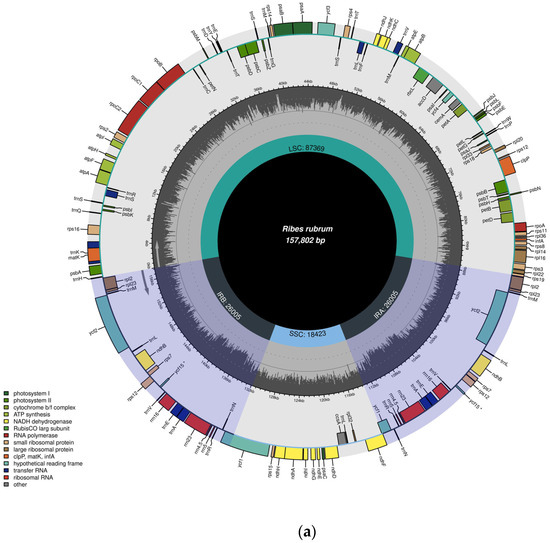
Figure 1
Open AccessArticle
Genomic Colinearity and Transcriptional Regulatory Networks of BES1 Gene Family in Horticultural Plants Particularly Kiwifruit and Peach
by
, , , , , , , , , and
Horticulturae 2023, 9(9), 971; https://doi.org/10.3390/horticulturae9090971 - 28 Aug 2023
Abstract
The BES1 transcription factor family was unique and critical in plants. The BES1s played roles in the Brassinosteroid (BR) signaling pathway and participated in the plant’s development, maturation, and stress response process. This study investigated the function of the BES1 gene family of
[...] Read more.
The BES1 transcription factor family was unique and critical in plants. The BES1s played roles in the Brassinosteroid (BR) signaling pathway and participated in the plant’s development, maturation, and stress response process. This study investigated the function of the BES1 gene family of 48 horticultural crops by phylogenetic and genomic colinearity network analysis. In addition, the transcriptional regulatory networks had analyzed the process during biotic stress, abiotic stress, fruit development, and postharvest of kiwifruit and peach. The study illustrated a comprehensive understanding of the phylogenetic relationships of the BES1 family in plant genomes and the prediction of growth and development of kiwifruit and peach fruits and maturation-related BES1 members, laying the foundation for further functional studies of BES1 genes in the future.
Full article
(This article belongs to the Collection Advances in Fruit Quality Formation and Regulation)
►▼
Show Figures

Figure 1
Open AccessArticle
Identification of Loci for Four Important Agronomic Traits in Loose-Curd Cauliflower Based on Genome-Wide Association Studies
by
, , , , , , and
Horticulturae 2023, 9(9), 970; https://doi.org/10.3390/horticulturae9090970 - 26 Aug 2023
Abstract
Cauliflower is a nutritious vegetable with inflorescences that are specialized to form the edible organs called curds. Uncovering key genes underlying important traits is crucial for the genetic improvement of this important crop. However, the genetic basis of many important agronomic traits, including
[...] Read more.
Cauliflower is a nutritious vegetable with inflorescences that are specialized to form the edible organs called curds. Uncovering key genes underlying important traits is crucial for the genetic improvement of this important crop. However, the genetic basis of many important agronomic traits, including curd performance and plant architecture in cauliflower, remains unclear. GWASs have proved to be powerful tools to study agronomic traits in many crops. To reveal the genetic basis of four important agronomic traits, namely, the main stem height (MSH), purplish curd (PC), external leaf wing (ELW) and weight of a single curd (WSC), we selected 220 core accessions of loose-curd cauliflower for resequencing, phenotypic investigation and GWAS. The approach revealed significant novel loci. We detected several significant associations: on C02 for MSH and PC, on C06 for ELW and on C01 for WSC. More interestingly, we identified a significant single-peak signal for the weight of a single curd (WSC), an important yield trait, and within this signal interval, we identified the BOB01G136670 gene with five SNPs encoding nonsynonymous mutations in the CDS region; these mutations resulted in two haplotypes with significant differences in curd weight. The weight of a single curd was significantly increased in the varieties with the BOB01G136670 Hap1 allele compared to those with BOB01G136670 Hap2. BOB01G136670 was highly conserved with the homologous genes that encode serine carboxypeptidase and belong to the S10 family in other species, including GS5, which functions as a positive regulator of grain size in rice, wheat and maize. Additionally, BOB01G136670 was highly expressed specifically at the curd enlargement stage, with low or even no expression at all in other tissues and stages, indicating that BOB01G136670 is a plausible candidate gene for WSC. Overall, this study identified genomic loci for four important agronomic traits that are relevant for accelerating biological breeding and the improvement of cauliflower varieties.
Full article
(This article belongs to the Special Issue Cruciferous Vegetables: The New Era of Vegetable Improvement)
►▼
Show Figures
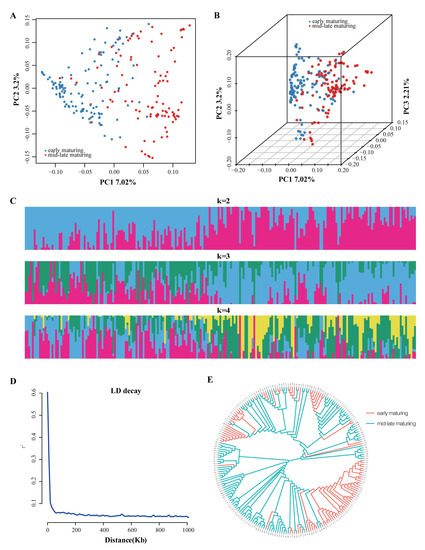
Figure 1
Open AccessArticle
Vernonia amygdalina Leaf Extract Loaded Electrosprayed Particles for Inhibiting Phytophthora spp. Causing Citrus Root Rot
by
, , , , , , , and
Horticulturae 2023, 9(9), 969; https://doi.org/10.3390/horticulturae9090969 - 25 Aug 2023
Abstract
Citrus is an important economic plant in Thailand. The infection of citrus roots by Phytophthora nicotianae leads to root rot, reduced growth, and branch death. Although fosetyl aluminum and metalaxyl are commonly employed to address citrus root rot, they possess limitations in terms
[...] Read more.
Citrus is an important economic plant in Thailand. The infection of citrus roots by Phytophthora nicotianae leads to root rot, reduced growth, and branch death. Although fosetyl aluminum and metalaxyl are commonly employed to address citrus root rot, they possess limitations in terms of their ability to diffuse to the root of citrus. Vernonia amygdalina leaf ethyl acetate extract (VLE) has been demonstrated to effectively inhibit Pythium deliense, a fungus closely related to Phytophthora nicotianae. This study aimed to investigate the anti-fungus activity of fractions obtained from the ethyl acetate extract of Vernonia amygdalina leaf against Phytophthora nicotianae, identify the most effective fraction, and formulate it into polymeric micro/nanoparticles using the electrospray process. The findings revealed that the VLE fraction eluted with ethanol:chloroform 1:1 had a high alkaloid content from metabolomic study and exhibited the potential to inhibit Phytophthora nicotianae at a concentration of 200 µg/mL. Consequently, this fraction was selected for incorporation into polymer blends of Poly Vinyl Alcohol/cellulose acetate to generate electrosprayed particles with a diameter of 0.97 ± 0.55 microns. These particles effectively suppressed in vitro Phytophthora nicotianae, thereby suggesting that VLE-containing electrosprayed particles have the potential to be applied and their in vivo performance in the treatment of citrus root rot evaluated in future experiments.
Full article
(This article belongs to the Special Issue Advances in Chemical Composition and Bioactivity of Horticultural Natural Products)
►▼
Show Figures
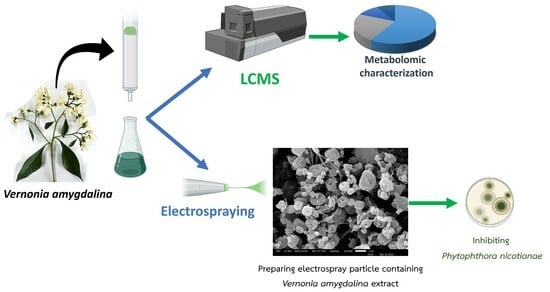
Graphical abstract

Journal Menu
► ▼ Journal Menu-
- Horticulturae Home
- Aims & Scope
- Editorial Board
- Reviewer Board
- Topical Advisory Panel
- Instructions for Authors
- Special Issues
- Topics
- Sections & Collections
- Article Processing Charge
- Indexing & Archiving
- Editor’s Choice Articles
- Most Cited & Viewed
- Journal Statistics
- Journal History
- Journal Awards
- Society Collaborations
- Conferences
- Editorial Office
Journal Browser
► ▼ Journal BrowserHighly Accessed Articles
Latest Books
E-Mail Alert
News
Topics
Topic in
Agriculture, Agronomy, Drones, Horticulturae, Remote Sensing, Sensors
Applications of Big Data and Machine Learning in Smart Agriculture
Topic Editors: Xiuliang Jin, Hao Yang, Zhenhai Li, Changping Huang, Dameng YinDeadline: 30 September 2023
Topic in
Agriculture, Agronomy, Horticulturae, IJPB, Plants
Tolerance to Drought and Salt Stress in Plants
Topic Editors: Roberto Barbato, Veronica De MiccoDeadline: 30 November 2023
Topic in
Antioxidants, Applied Biosciences, Biomolecules, Horticulturae, Molecules, Pharmacy, Plants
Bioactive Substances, Pharmacognosy and Metabolomics
Topic Editors: Jiri Gruz, Lucie RárováDeadline: 10 December 2023
Topic in
Dietetics, Foods, Horticulturae, Nutrients, Plants
Edible Plants as Sources of Polyphenols: Cultivation Techniques, Extraction, and Nutraceutical Applications
Topic Editors: Luana Beatriz dos Santos Nascimento, Cecilia Brunetti, Antonella GoriDeadline: 20 December 2023

Conferences
Special Issues
Special Issue in
Horticulturae
Stress Cultivation and Physiology of Vegetables: Challenges and Prospects
Guest Editors: Zhangjian Hu, Chaoyi HuDeadline: 1 September 2023
Special Issue in
Horticulturae
Implementation of IPM Measures in Vegetable Cropping Systems
Guest Editor: Srinivasan RamasamyDeadline: 22 September 2023
Special Issue in
Horticulturae
Soil Science, Water and Nitrogen Management in Horticultural Production
Guest Editor: Rui Manuel Almeida MachadoDeadline: 30 September 2023
Special Issue in
Horticulturae
Green Roofs, Green Walls, Urban Greenhouses and Hi-Tech City Landscape for Sustainability
Guest Editors: Carlo Alberto Campiotti, Carlo Bibbiani, Arianna LatiniDeadline: 10 October 2023
Topical Collections
Topical Collection in
Horticulturae
Postharvest Handling of Horticultural Crops
Collection Editors: Maria Dulce Carlos Antunes, Custódia Maria Luís Gago, Adriana Guerreiro
Topical Collection in
Horticulturae
New Challenges in Productivity of Berry Fruits
Collection Editors: Christopher M. Menzel, Anita Sønsteby
Topical Collection in
Horticulturae
New Advances in Fruit Quality: Pre-harvest Techniques and Postharvest Management
Collection Editors: Alessio Allegra, Giuseppe Sortino
Topical Collection in
Horticulturae
Recent Advances in Hydroponic and Aquaponic Research
Collection Editor: Michael Timmons



